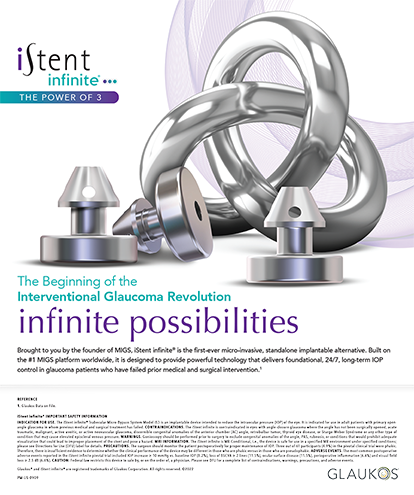Why compound? Patient noncompliance is one of the main reasons why pharmacists compound prescription medications. Many patients are allergic to dyes or preservatives, or are sensitive to standard drug strengths. Most ophthalmic solutions are preserved with benzalkonium chloride—if the patient is allergic to this preservative, he or she has nowhere to turn. The pharmacy works in conjunction with the physician to compound prescriptions in order to change dosage forms. Compounding can vary the delivery method, providing the patient with the most effective form of ingesting the medicine. For example, medications can be produced for topical as well as oral use, in the form of capsules, creams, lotions, lozenges, popsicles, powders, and sprays.
When a pharmaceutical company no longer manufactures a particular drug, a compounded prescription may be available. An example of a drug that is custom compounded is hyaluronidase (formerly known as Wydase®; Wyeth-Ayerst, Radnor, PA) that works by a depolymerization of extracellular hyaluronic acid. It is believed that hyaluronidase promotes the spread of local anesthetic; it has also been used in injections of local anesthesia for cataract surgery as well as other ophthalmic surgeries. According to Charles Leiter, PharmD, FIACP, of Leiter's Pharmacy in San Jose, CA, when hyaluronidase was taken off the market, surgeons were left with no viable alternative, and his pharmacy began compounding it. Leiter's Pharmacy supplies hyaluronidase on a national basis and has every batch tested for endotoxins, sterility, and potency by an independent laboratory before they release it, in accordance with USP and AAO guidelines. It is imperative that any pharmacy compounding hyaluronidase should have each batch tested.
CLINICAL STUDY
John Hagan, III, MD, from Discover Vision Centers in Kansas City, MO, reports that in a university ophthalmology department, several postoperative diplopia and ptosis cases occurred in the first 3 months after Wydase® became unavailable for use with injection anesthesia. These cases suggest that hyaluronidase, when used with injection anesthesia, may help to protect extraocular muscles and nerves from the toxic effects of local anesthetic agents. The spreading action of hyaluronidase facilitates uniform diffusion of anesthetic agents.
HARD TO GET
Certain drugs are custom compounded when they are unavailable or discontinued. For example, Dr. Leiter explains that Natacyn® (Alcon Laboratories, Inc., Fort Worth, TX), the drug of choice for treating Fusarium solanae keratitis, fungal blepharitis, conjunctivitis, and keratitis, is hard to find because it is expensive, has a short expiration date, and cannot be returned when it expires. It is also troublesome to order. “Thiotepa and mitomycin are expensive and tricky to work with,” he adds. Leiter's pharmacy has found a niche where they keep several medications in stock that are difficult to obtain.
CORNEAL ANTIREJECTION THERAPY
According to Dr. Leiter, cyclosporine is the best medication for corneal antirejection therapy. He states that there is some interest in tacrolimus, but it is very expensive. “The trick with cyclosporine is to come up with a nonirritating, well-tolerated suspension,” he says. This is very difficult due to two reasons. “First,” he states, “all of the commercially available cyclosporine is made using alcohol to help make it soluble. Second, up until recently, one could not find the cyclosporine powder.” Leiter's pharmacy has two proprietary formulas, one for dry eyes that is a 0.05% solution, and one that is composed of 1% to 2% cyclosporine suspension. Cyclosporine tends to sting in some patients, so the pharmacist must work with the ophthalmologist and the patient to try different vehicles and concentrations to maintain the patient's compliance and increase the chances of a positive outcome for the therapy. Dr. Leiter states that for certain patients, cyclosporine is an effective drug for dry eyes.
PRESERVATIVE-FREE
Dr. Leiter's pharmacy strives to give the ophthalmologist the option of providing medications that are preservative-free. Additional examples of medications that are not available commercially are dexamethasone ophthalmic ointment for allergic conjunctivitis; timolol PF for glaucoma; EDTA for band keratopathy; clotrimazole for acanthamoba kerititis; as well as fluconazole and miconazole for fungal infections. His pharmacy is also currently trying to source out phospholine iodide. Dr. Leiter also custom compounds various solutions for diagnostic tests (rose bengal, lissamine green, and hydroxyamphetamine) that are performed in the office. It is interesting to note that Dr. Leiter is currently working on a trypan blue compounded injectable which should be available next month. The difficulty with this compound is in making it endotoxin-free. Dr. Leiter states that this issue is important because injecting endotoxins into the eye can cause uveitis or endophthalmitis. To treat strains that are resistant to the aforementioned medications, Leiter's Pharmacy compounds paromomycin for resistant strains of Acanthamoeba.
Eric Everett, BJ, BSc, Pharm, FIACP, CCN, the owner of O'Brien Pharmacy, in Kansas City, MO, compounds an ophthalmic preparation which is a topical pediatric spray used for cycloplegia, which contains cyclopentolate, tropicamide, and phenylephrine. Patient and physician acceptance is high for this spray, which is administered topically to the eyelid with a metered dose, achieving results equal or better than drops.
TOP TRENDS
Currently, Dr. Leiter's two biggest products are cyclosporine for dry eyes and hyaluronidase. Awareness of custom compounding is growing among physicians and patients. It allows for more therapeutic alternatives than what would otherwise be available, and the medication can be individualized. Mr. Everett adds that this is an important point because it means increased effectiveness with fewer adverse reactions. He notes, “Commercial drug manufacturers must face issues of patentability and patient population before they make, or continue to make, a drug.” “Thus, a wonderful drug that may help thousands of people may otherwise never be available,” he concludes.
The drugs, equipment, techniques, and training available at compounding pharmacies are growing exponentially. The future will bring so many custom options that it will be difficult even for pharmacists to keep up. This creates complications, states Mr. Everett. He explains that there will probably be more problems arising from compounds because of 1) increased use, 2) higher levels of skill and equipment required, and 3) pharmacies attempting these compounds without these essential tools. “I foresee a specialty in the profession of pharmacy requiring specific licensing or certification to insure uniformity, safety, and effectiveness in high-risk, technical compounding,” he maintains.
THE POWER OF THE FDA
Mr. Everett explains that Congress has specifically limited the role of the FDA in medications compounded for an individual. This is part of the reason that a prescription is needed for every medication that is made. The FDA does have regulatory authority in pharmacies, but most regulatory control is left to the state boards of pharmacy.
Custom compounding pharmacies are on the rise. Dr. Leiter states, “Drugs are made for the masses—we compound for the individual. Custom compounding pharmacists can often increase compliance and patient well-being by tailor-making the drug to suit the individual patient's and doctor's needs—we are problem solvers.”
Charles W. Leiter, PharmD, FIACP, the owner of Leiter's Pharmacy, in San Jose, California, is a board-certified compounding pharmacist and a Fellow of the International Academy of Compounding Pharmacists. He also serves as a consultant to the Francis I Proctor Foundation at UCSF. He may be reached at (800) 292-6773; cleiter@leiterrx.com or at booth 4525 at the AAO meeting. Eric Everett, BJ, BSc, Pharm, FIACP, CCN, the owner of O'Brien Pharmacy, in Kansas City, Missouri, is a board-certified compounding pharmacist and board-certified clinical nutritionist, and an adjunct faculty member of the University of Missouri—Kansas City School of Pharmacy and the University of Kansas School of Medicine. He may be reached at (800) 627-4360; eric@obrienrx.comJohn C. Hagan, III, MD, FACS, is from Discover Vision Centers in Kansas City, Missouri. He does not hold a financial interest in O'Brien Pharmacy nor the sale of hyaluronidase. Dr. Hagan may be contacted at (816) 436-4600; jhagan@kc.rr.com Warren E. Hill, MD, FACS, is from East Valley Ophthalmology in Mesa, Arizona. He may be contacted at (480) 981-6130; hill@a-scan.net. Dr. Hill does not hold a financial interest in O'Brien Pharmacy nor the sale of hyaluronidase.


